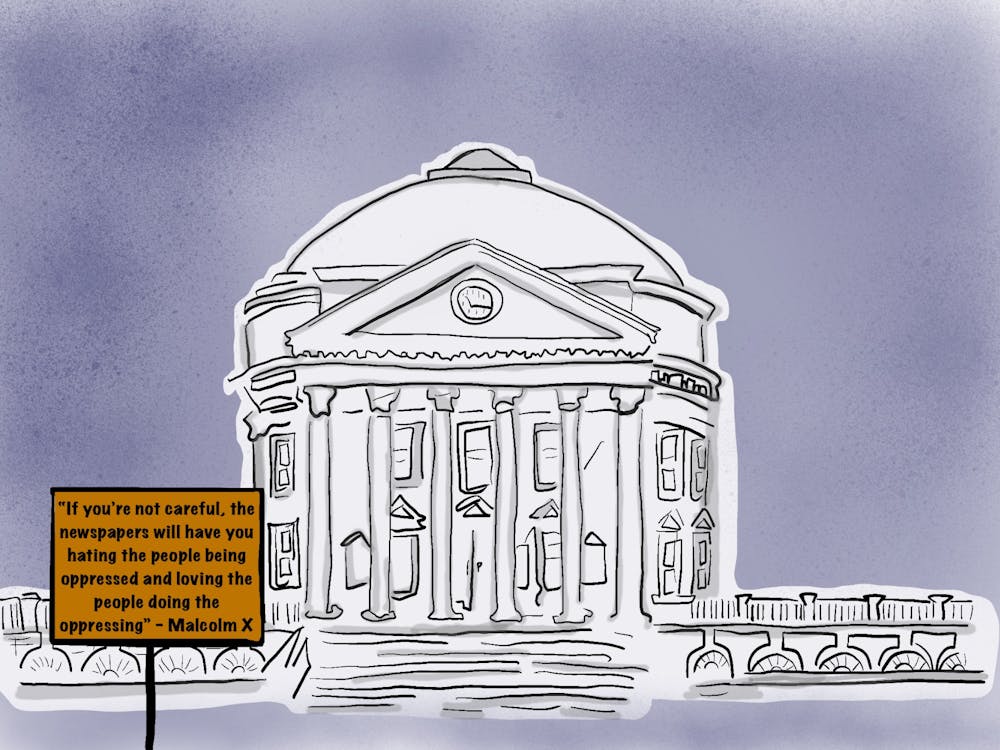GROWTH is a phenomenon that challenges policy-makers and elected officials just as it presents difficult decisions for members of the business community in the Old Dominion. As demographic growth in suburban regions of Virginia persist, pressure will continue to build to accommodate these new citizens in the institutions and programs provided by the state government. Higher education will be subjected to this burden of increasing capacity in the face of overall decreasing support from the Richmond. Budgetary considerations notwithstanding, the University's Board of Visitors should resist political pressures to expand the capacity of this institution to accommodate any surge in undergraduate enrollment.
Looking forward to the end of the decade, Governor Mark R. Warner has already predicted a balloon of 38,000 more students who will be applying to enroll in a 4-year program at an institution of higher education in Virginia. This statistic identifies students who are currently in Virginia's secondary school system. The State Council of Higher Education (SCHEV) knows these students are on the way. The question is how to accommodate them.
The growth of the undergraduate population at the University is one a seemingly perennial issue that is raised a few times a decade. Beginning in the early 1970s, the debate over how best to integrate women into a newly coeducational University raised a cry from students wedded to the status quo tradition of this institution. In the past thirty years, the University has slowly swelled from the small liberal-arts academy of our parents' generation to a diverse, nationally prominent state University that churns out thousands of degrees every spring, much to the consternation of many dyed in the wool traditionalist alumni.
Most of this growth has been positive in terms of diversity. However, it has also placed specific burdens on many of the hallmark institutions of the school. One of the founding concepts articulated by University Rector James Madison was that government is most responsive to its citizenry when government is subdivided into pieces that represent small communities of people. Similarly, student self-governance works best with a smaller student body. For example, a more homogenous and diminutive student population is much better suited to a student-administered honor system. Self-policing is facilitated by a less anonymous student body and standards of conduct are universally accepted thanks to similar socio-economic backgrounds.
A larger and more diverse student population adds a great deal to the educational experience, but fuels dispute over the line between acceptable and unacceptable conduct in some cases. Some critics note that this leads to less consistent rulings by student juries. This is not meant to advocate less diversity in order to promote a more functional honor system, but instead points out the tension between institutions and growth of the population.
Plato preferred a method of education at his Academy that was predicated upon a one-on-one interaction between instructor and student. When class sizes swell due to increased enrollment and decreasing state support, the personal student-professor relationships that characterize the academic culture of this institution is put to risk.
With a $204 million and $342 million state higher education funding shortfall in 2002 and 2003, respectively, as identified by SCHEV,the Commonwealth lacks the resources to increase support to institutions that must expand capacity. The University has proposed a new relationship with the state to address the funding concerns. Placing these considerations to the side, it is clear that any increase in student population will not be met with capital support from Richmond to accommodate those students appropriately.
Instead, let the growing schools like Old Dominion, whose President recently proposed a program to increase that institution's capacity by several thousand if met with state assistance, Virginia Commonwealth, and George Mason Universities help bear this burden. The educational mission of the University of Virginia will be dramatically threatened by any move by the Board of Visitors to expand the size of the student body to accommodate this demand.
As unique institutions like the Pep Band disappear into the memory of a small, elite institution of the past in exchange for prime-time sports and as an increasing emphasis and investment is placed on professor and student research instead of the broad intellectual inquiries of a traditional liberal arts education, the University is undergoing a transformation at the most basic level of educational mission. Much of this change is inevitable. However, increasing the size of the undergraduate population will only injure the educational experience of the student body. It should be made clear to the Board of Visitors: students will vehemently protest any action that so threatens the excellence of this institution.
(Preston Lloyd's column appears Thursdays in the Cavalier Daily. He can be reached at plloyd@cavalierdaily.com.)




